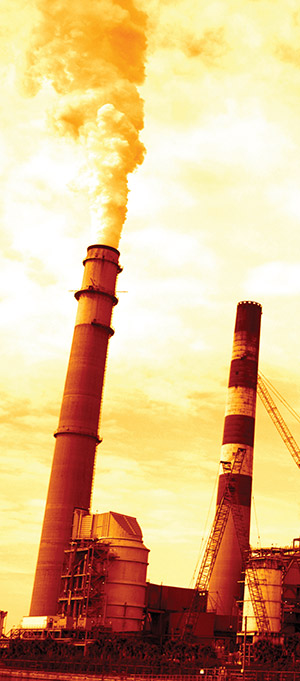 Fine particulate matter affects air quality, public health
Fine particulate matter affects air quality, public health
With such a strong early allergy season this year, many people have taken to checking pollen counts on their favorite weather site. If this is you, you may have also noticed information on air quality, like the EPA’s Air Quality Index, which monitors and forecasts ozone and fine particulate levels. Most people recognize and know ozone, but what are fine particulates?
Fine particulates (or fine particulate matter) are a subset of a type of air pollution called particulate matter, or PM. This pollution consists of any sort of very small solid or liquid particles floating in the air, including some of those plant pollens that cause many outdoor allergies. While pollens can range widely in size, the PM pollution of most interest for human health is small particles less than 10 microns in diameter, about one-fifth the width of a human hair. These are often referred to as PM10. They are a concern because they are small enough to inhale and get into our lungs, and once there, they can be difficult for our body to remove. As a result, they can cause a number of respiratory problems like aggravated asthma and decreased lung function.
The fine particulates shown on the Air Quality Index are smaller still: less than 2.5 microns. Also called PM2.5, these particles are less than one-twentieth the width of a human hair. Like PM10, the health impacts of these tiny particles are the direct result of their size. They are so small that they can get deep inside our lungs when inhaled, and some can even get in our bloodstream and be carried throughout our bodies. As a result, the health impacts from inhaling fine particulates are not isolated to our respiratory systems; they affect our cardiovascular systems, increasing the risk of heart disease and heart attacks. Children, the elderly and people with existing lung or heart conditions are at particular risk for complications from breathing in these fine particulates and are highly advised to monitor the Air Quality Index for their area to minimize exposure.
Fine particulates can come from many sources and be made of a wide variety of compounds. For example, some PM2.5 is directly emitted as soot and other compounds from fires or burning fossil fuels; as tire and brake particles from highways; or as mineral particles from things like mining or construction sites. Other PM2.5 is formed in the air through chemical reactions of sulfur dioxide or nitrogen oxide pollution that comes from power plants and automobiles.
Even with all the types and sources of PM2.5, there are many ways to control the amount in our air. The EPA limits the amount of PM2.5 that large facilities are allowed to emit, as well as compounds like sulfur dioxide and nitrogen oxides, which has made a huge difference for our air quality. Additionally, other environmental regulations can indirectly reduce PM2.5; for example, the EPA’s newly proposed standards to cut carbon emissions from power plants will likely reduce the amount of electricity we get from coal in favor of cleaner alternatives like natural gas, renewables and efficiency. And as we switch to more fuel- and energy-efficient practices, we will reduce PM2.5 even more.
